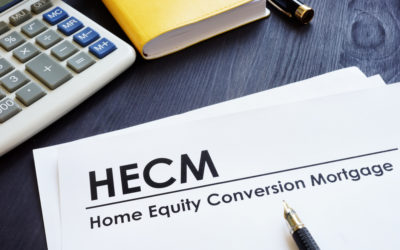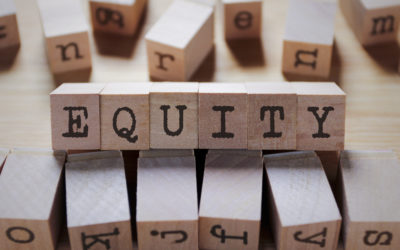Every year, the Federal Housing Administration (FHA) sets lending limits on all FHA loans, including home equity conversion mortgages (HECMs). HECMs are the federally-insured reverse mortgage program overseen by the U.S. Department of Housing and Urban Development (HUD), which enables eligible homeowners to convert a portion of their home equity into cash as loan proceeds.
If you’re considering a HECM and are curious about how much money you may be able to receive from this form of financing, today we discuss the updated reverse mortgage limits for 2022, which increased to $970,800.
After this read, you’ll have an understanding of the maximum borrowing amount you may be able to claim, which factors could affect your personal reverse mortgage limit, and how these proceeds might be used as a financial planning tool during retirement. Click on a link below to learn more.
HECM FHA Mortgage Limits
In December 2021, HUD announced that they were increasing the reverse mortgage limit for the fifth year in a row, which would go into effect January 1, 2022.
Take a look at the limit changes that have occurred since 2017:
- 2017: $636,150.00
- 2018: $679,650.00
- 2019: $726,525.00
- 2020: $765,600.00
- 2021: $822,375.00
- 2022: $970,800.00
The reverse mortgage limit is also referred to as the maximum claim amount (MCA). This is the maximum dollar amount the FHA will insure for a HECM non-recourse loan. This means that even though your home may be appraised above $970,800, that is the maximum cap on the amount of equity that may be considered for a HECM.
What determines reverse mortgage limits?
The figures for HUD’s nationwide HECM limit are calculated by 150 percent of the FHA conforming loan limits for Fannie Mae and Freddie Mac, which were recently raised to $484,350.
How does the reverse mortgage limit affect me?
The new limit on reverse mortgages allows borrowers with substantial home equity to get more loan proceeds than they would have in previous years. The increase will benefit potential borrowers with high-valued homes and large mortgages, since there may now be enough net principal limit to pay off their existing mortgage.
What is a reverse mortgage principal limit?
Also known as a borrowing limit, the principal limit refers to how much money you may be able to receive from a HECM loan. It’s important to note that the HECM FHA mortgage limit for lenders is not the same as an individual principal limit for borrowers.
Although the FHA will insure up to $970,800, it does not necessarily follow that a borrower is eligible for that size loan. If you’re curious about your personal reverse mortgage principal limit and what you may qualify for, use our reverse mortgage calculator to receive a free estimate.
What affects my reverse mortgage principal limit?
Your principal limit is determined by three factors:
- The age of the youngest borrower
- The interest rate of the loan
- The appraised value of the home
HUD supplies lenders with a table of principal limit factors (PLF) used for determining initial borrowing amounts for HECM loans. Generally speaking, older borrowers with high-value homes receive a higher reverse mortgage principal limit than younger borrowers with lower valued homes. During the reverse mortgage application process, a lender will use the information provided by an Appraisal Management Company (AMC) in order to verify your HECM eligibility and calculate the size of your loan.
Note: The reverse mortgage limit is subject to property eligibility. The list of HUD-approved properties for HECM loans includes:
- Single-family homes (one- to four-unit properties)
- Condominiums (must be FHA approved)
- Properties in planned unit developments (PUDs)
- Townhouses

What is a reverse mortgage net principal limit?
The reverse mortgage net principal limit refers to the amount of money a borrower may receive once all HECM closing costs are covered. Many borrowers choose to pay the HECM closing costs with proceeds from their principal balance, and the remaining proceeds are considered the “net” amount.
A borrower’s reverse mortgage net principal limit depends mostly on the home equity value and upfront fees. The upfront costs associated with a HECM loan may include:
- Mortgage Insurance Premium—Borrowers incur an upfront cost for FHA mortgage insurance, which guarantees that you will receive expected loan advances. It also ensures borrowers will never be forced to pay more than the appraised value of the home or the outstanding loan balance, whichever is less.
- Third Party Charges—Various fees might include an appraisal, survey, inspection, title search, and other affiliated closing costs.
- Origination Fee—An FHA-approved lender may charge an origination fee processing the HECM loan, which is capped at $6,000.
- Servicing Fee—Servicing is provided throughout the life of the loan through account statements, disbursed proceeds, and making certain the borrower keeps up with loan requirements.
How much of my reserve mortgage limit may I access?
Prior to 2013, borrowers could take out 100 percent of their net principal balance in one lump sum. However, new safety measures now restrict the amount of proceeds borrowers may take out in the first year. As of 2020, the amount a borrower may access in the first year is limited to:
- The greater of 60 percent of the approved loan amount, or
- The sum of mandatory obligations plus 10 percent of the reverse mortgage principal limit
For example, if John has no existing obligations (such as an outstanding mortgage) and qualifies for a $100,000 reverse mortgage loan, he may access up to $60,000 in the first year. However, if John had an existing $70,000 mortgage, he would be able to receive more money—up to $80,000 in the first year [$70,000 + 10% of the principal limit ($10,000) = $80,000].
Depending on your circumstances, HECM guidelines may require funds set aside from your reverse mortgage in order to pay for homeowner’s insurance, property taxes, and necessary maintenance repairs. In this case, the lender will retain a portion of the borrowed money in a “set-aside” account in order to cover mandatory expenses in the upcoming years.
Getting Started with Reverse Mortgages
If you’re looking to get started with a reverse mortgage, these articles can help guide you through all aspects of the process.
Guide to HECM Loan Reverse Mortgage Limits
How do I receive my reverse limit proceeds?
Once you know your reverse mortgage limit and the amount of proceeds you can expect to receive from a HECM loan, you can choose between several different payout options:
- Line of Credit—With this form of payout, borrowers receive money through unscheduled payments. You only pay interest on the money you use and the unused credit grows over time.
- Monthly Payout—There are two types of monthly payouts, term and tenure. Term provides borrowers equal monthly payments for a fixed number of months; tenure provides equal monthly payments as long as at least one borrower lives at the home.
- Lump Sum—With a lump sum payout, borrowers receive all available funds at once. The reverse mortgage limitation of 60 percent in the first year is designed to make HECM funds last longer and promote positive money management.
Understanding Reverse Mortgage Limits

If you’re not sure how a reverse mortgage works, we can help. The HECM program allows eligible borrowers (ages 62 and older) to tap into a portion of their home equity without having to sell their home or move out of the property.
Borrowers have the choice of how they prefer to receive their payouts. In addition, repayment of the loan is not due until the loan reaches a maturity event, typically when the borrower moves, sells the home, passes away, or fails to meet their loan obligations.
Converting equity into loan proceeds gives senior homeowners the financial freedom to cover living expenses, pay off existing mortgages, and live The GoodLife in Retirement. Reverse mortgage solutions may open a number of doors to eligible borrowers by creating the opportunity for extra income during your Golden Years. You may access the proceeds of your reverse mortgage principal limit to pay off debt, end monthly mortgage payments, finance home improvements, cover medical expenses, age independently, or simply to afford large purchases.
The amount of home equity you may borrow depends on the current reverse mortgage limit—$970,800 for cases assigned between Jan. 1, 2022 to Dec. 31, 2022—in addition to principal limit factors. The team of experts at GoodLife are committed to guiding you through every aspect of the reverse mortgage process so you can step confidently into a financially-sound future. We’ll answer any questions you might have, making sure a reverse mortgage is right for your unique retirement goals.
If you’re interested in living the retirement you’ve always dreamt about, contact GoodLife to see how we can help turn your vision into a reality.

 1-866-840-0279
1-866-840-0279



